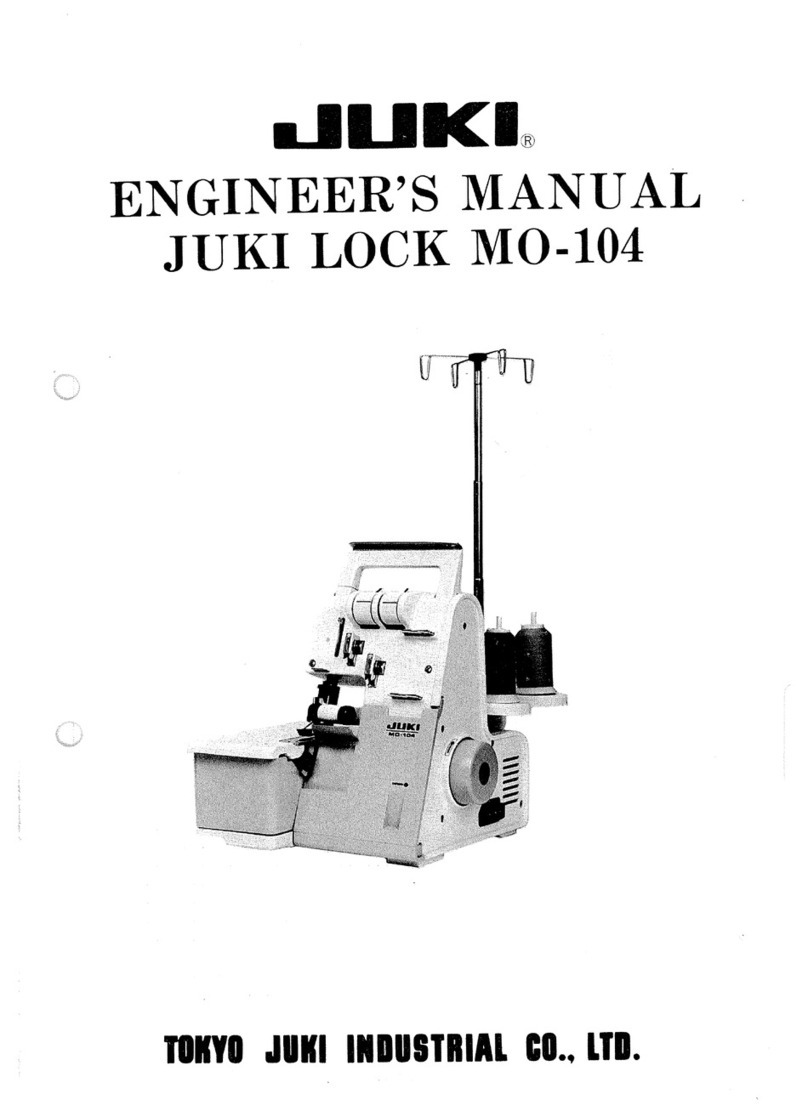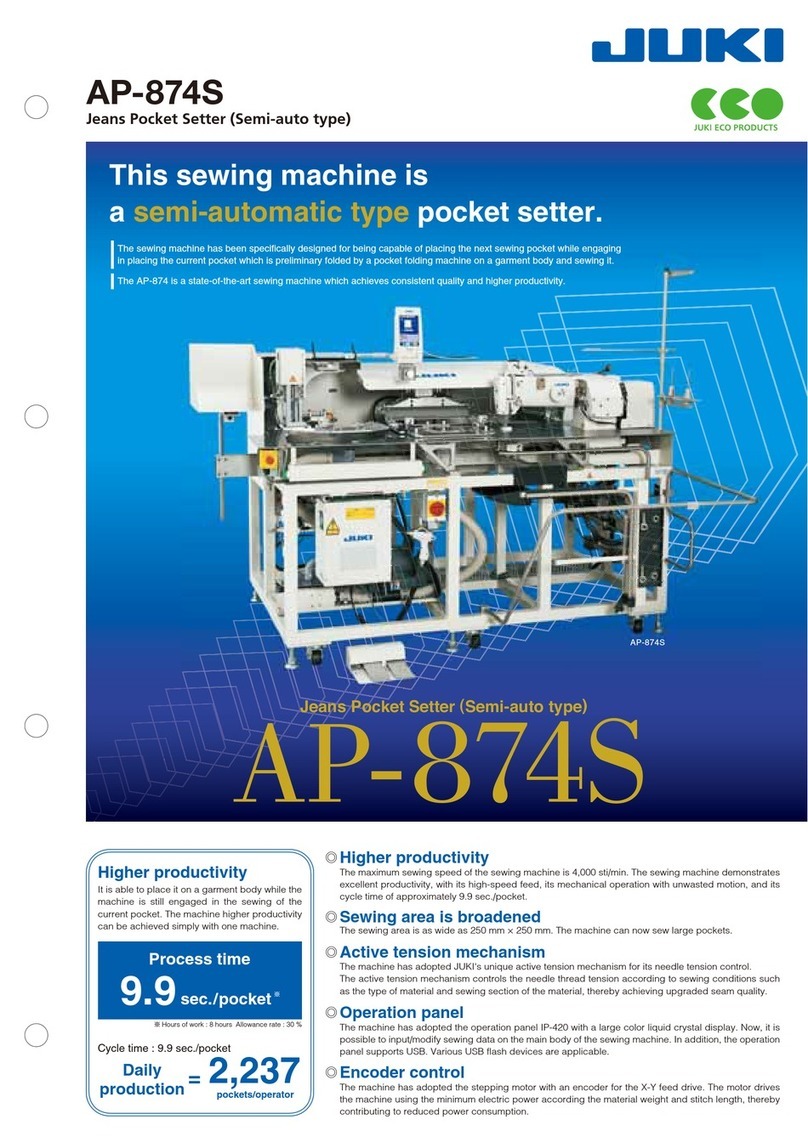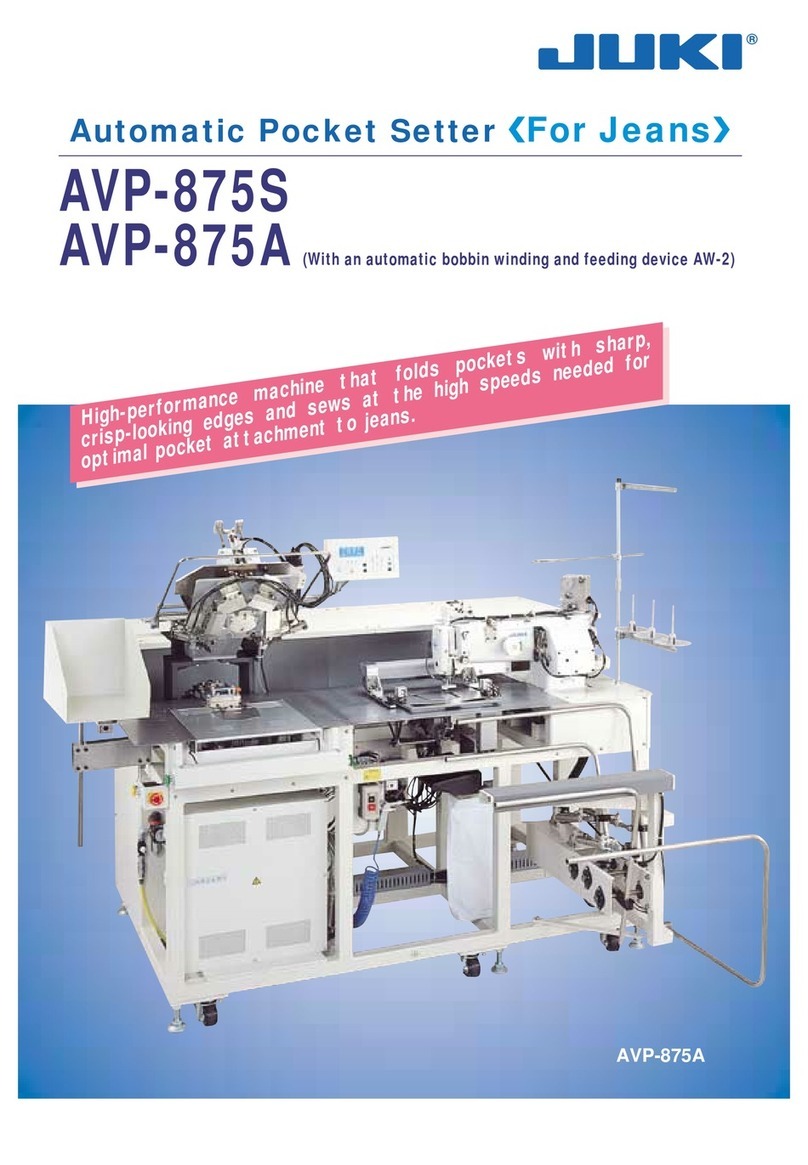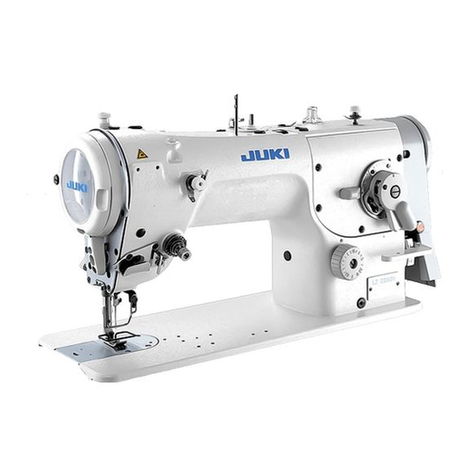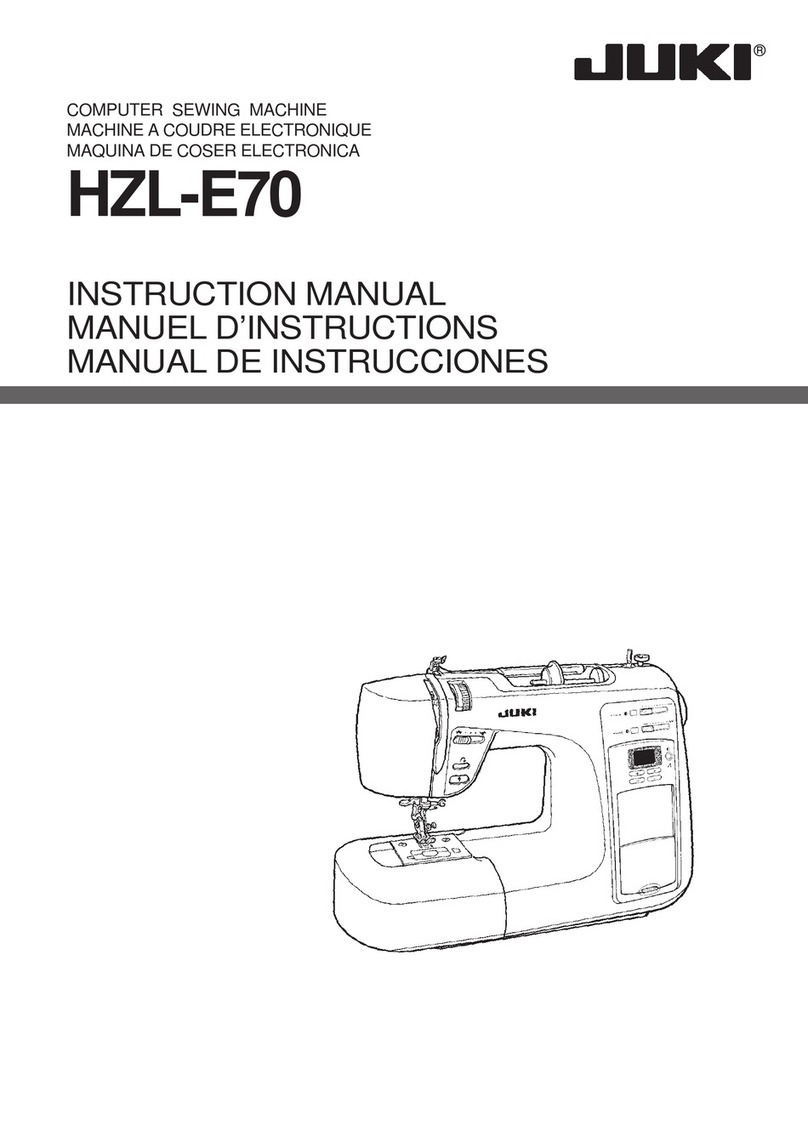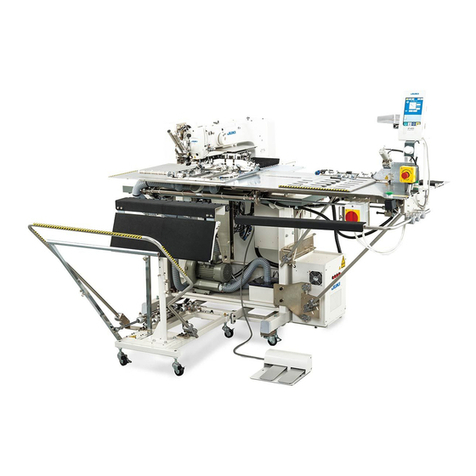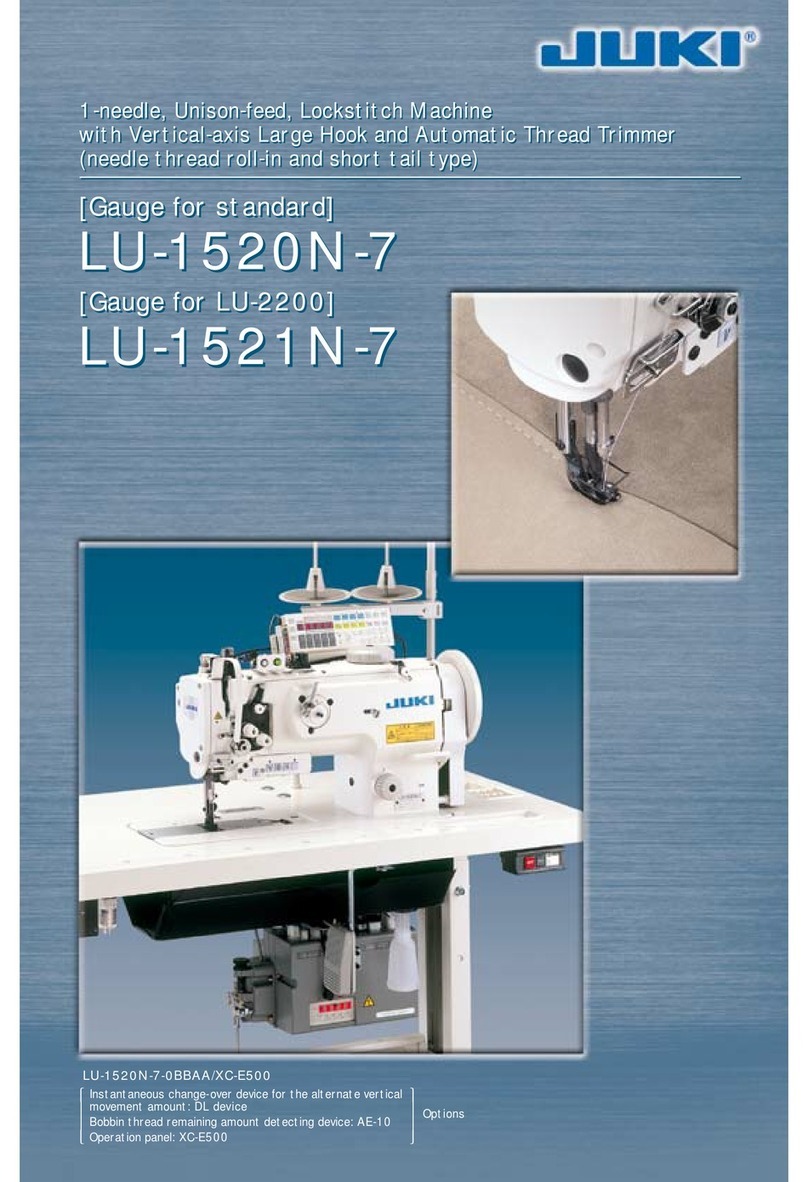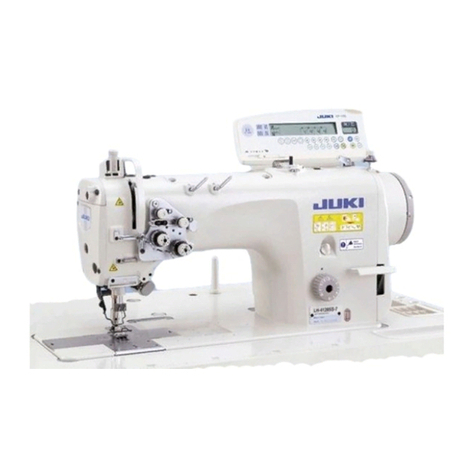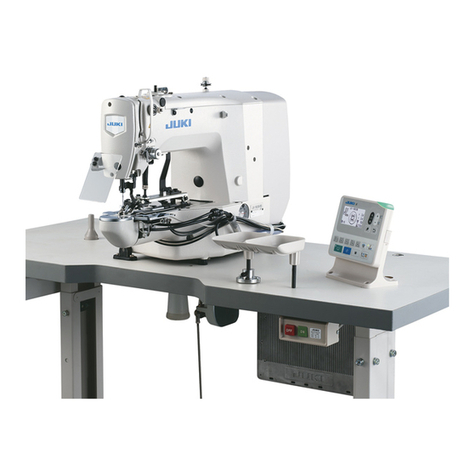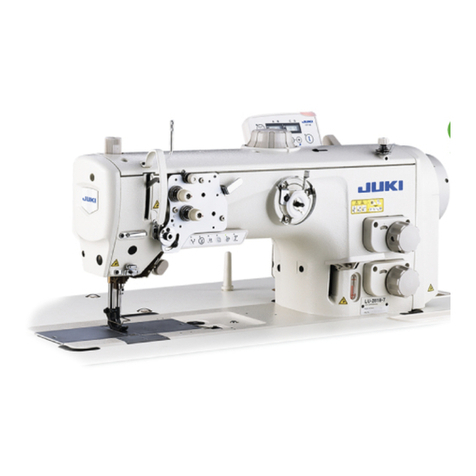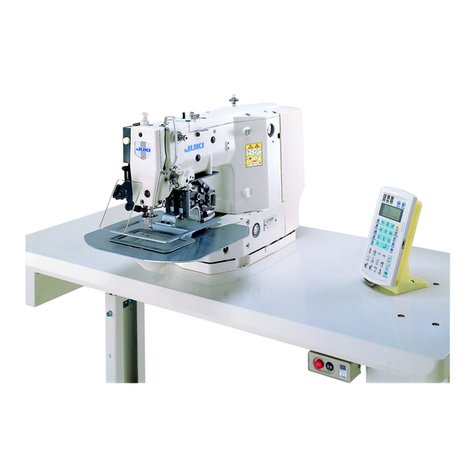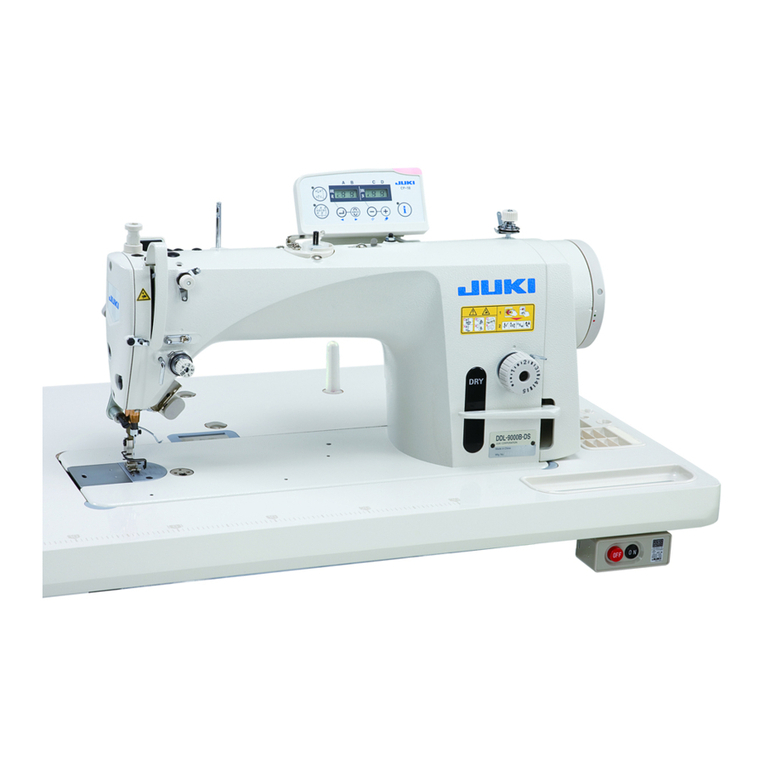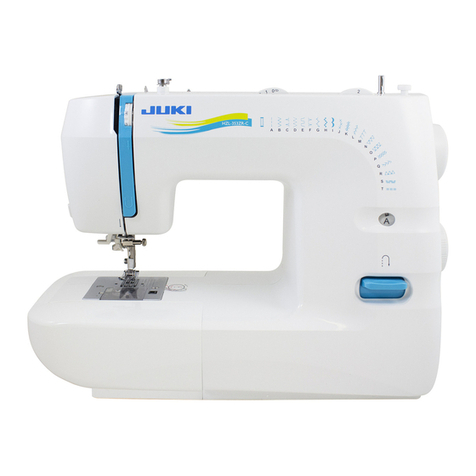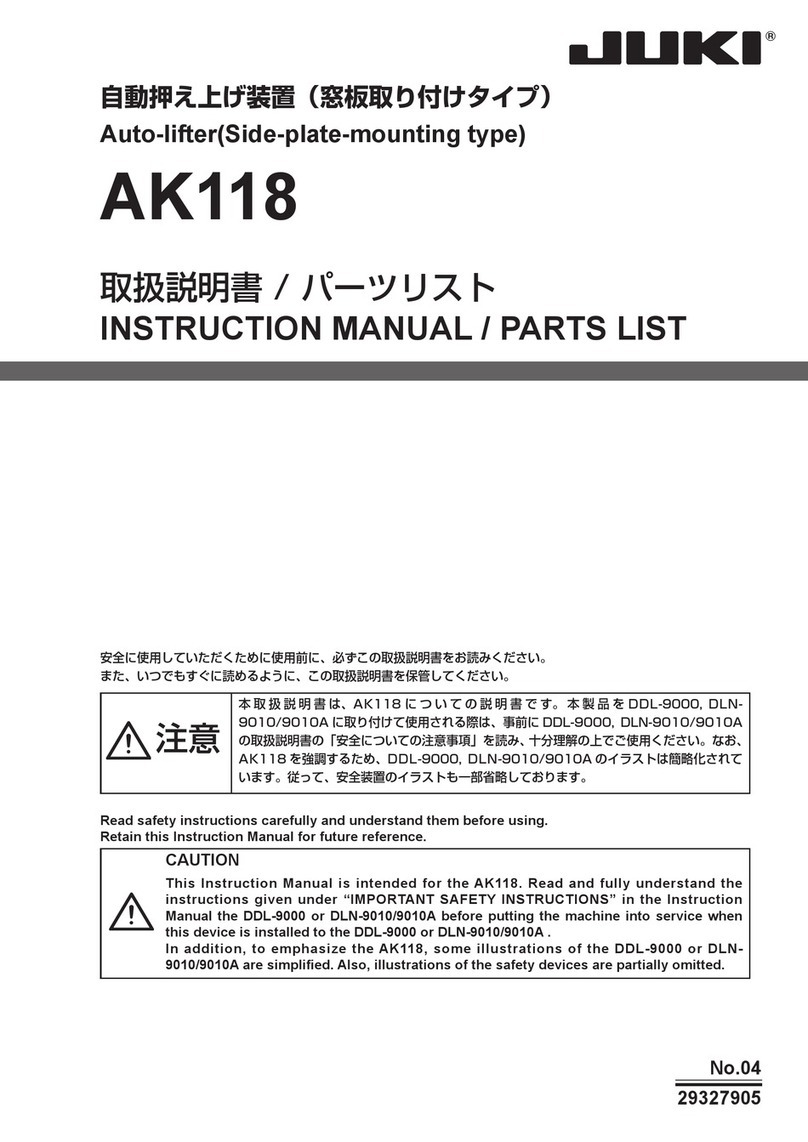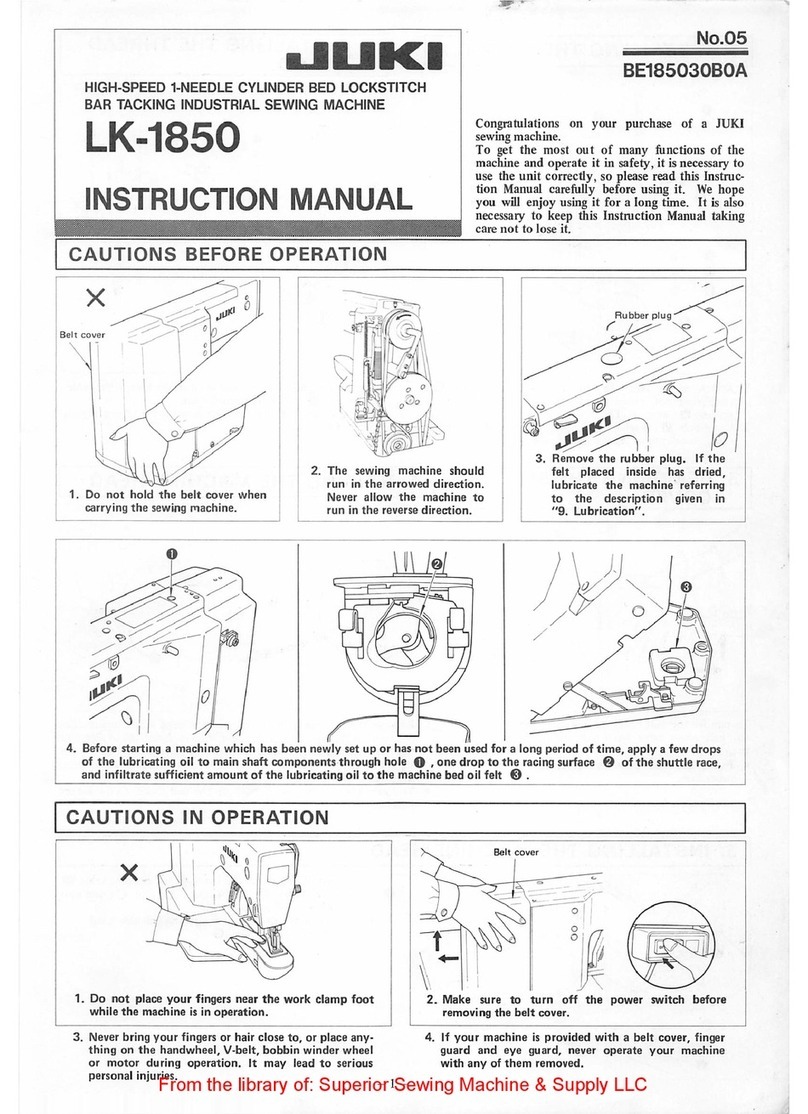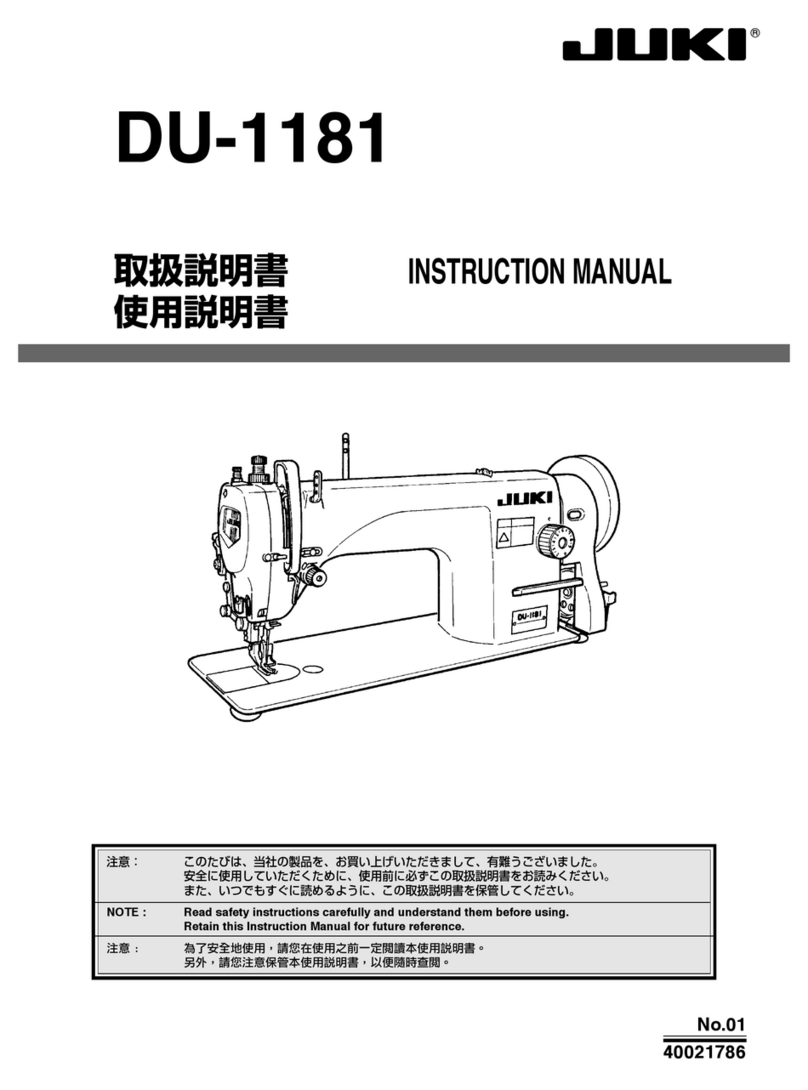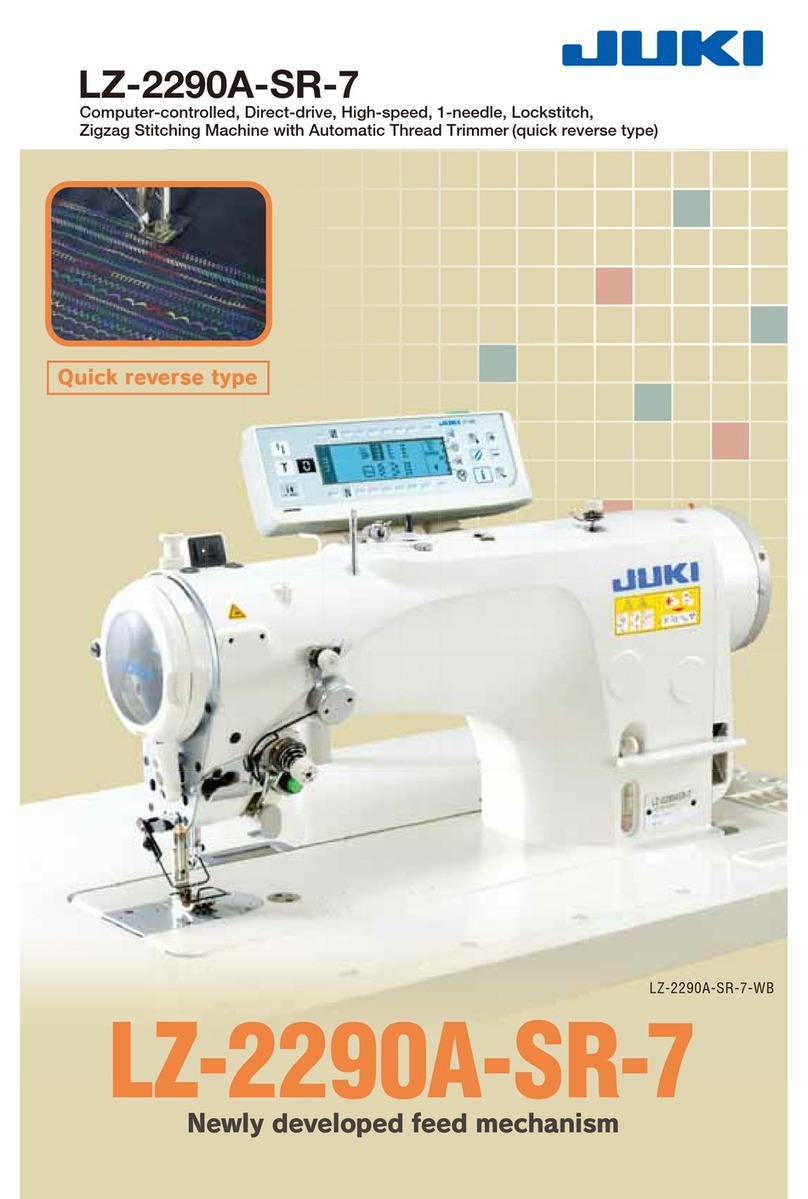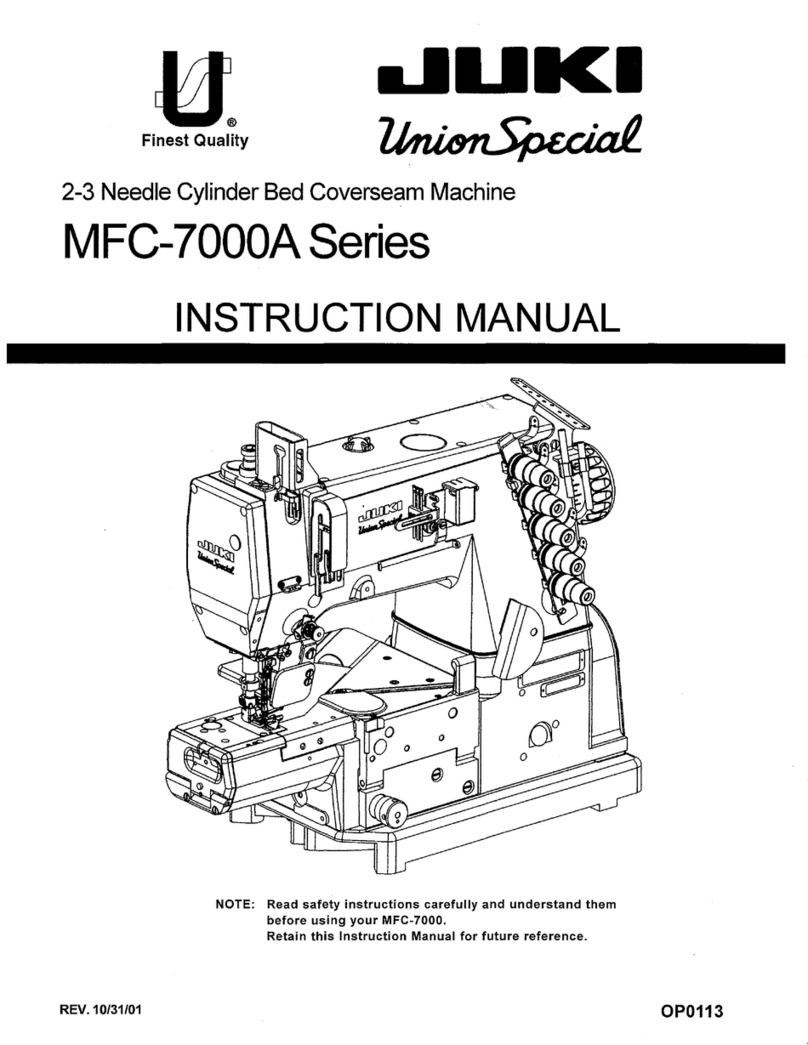
4. ADJUSTING THE SEWING MACHINE ......................................................................... 24
4-1. Thread tension................................................................................................................... 24
4-1-1. Adjusting the needle thread tension .....................................................................................24
4-1-2. Adjusting the bobbin thread tension ..................................................................................... 24
4-2. Thread take-up spring....................................................................................................... 24
4-2-1. Adjusting the thread take-up spring strength.......................................................................24
4-2-2. Adjusting the thread take-up amount of the thread take-up spring.................................... 24
4-3. Presser foot........................................................................................................................ 25
4-3-1. Adjusting the pressure of the presser foot ........................................................................... 25
4-3-2. Adjusting the height of the presser bar.................................................................................25
4-3-3. Micro-lifting mechanism of the presser foot ........................................................................25
4-4. Adjusting the stitch length ............................................................................................... 26
4-5. Changing the sewing speed ............................................................................................. 26
4-6. LED hand light ................................................................................................................... 27
4-7. Reverse feed stitching ...................................................................................................... 27
4-8. Custom switch ................................................................................................................... 28
4-9. Mirror stitching .................................................................................................................. 30
4-10. Fagot stitch ...................................................................................................................... 32
4-11. Adjusting the amount of oil in the hook ....................................................................... 33
5. HOW TO USE THE OPERATION PANEL ..................................................................... 34
5-1. Explanation of the sewing screen (when selecting a sewing pattern) ......................... 34
5-2. Sewing patterns................................................................................................................. 38
5-2-1. Sewing pattern conguration ................................................................................................. 38
5-2-2. List of sewing patterns............................................................................................................ 39
5-2-3. Reverse feed stitching (at start) pattern ................................................................................41
5-2-4. Reverse feed stitching (at end) pattern .................................................................................46
5-2-5. Editing the sewing patterns ....................................................................................................47
5-2-6. List of pattern functions.......................................................................................................... 50
5-2-7. Teaching function ....................................................................................................................60
5-2-8. One-touch utility changeover function ..................................................................................62
5-2-9. Registration of a new sewing pattern .................................................................................... 63
5-2-10. Copying a pattern ..................................................................................................................65
5-2-11. Narrow-down function...........................................................................................................66
5-3. Setting of the sewing shape ............................................................................................. 67
5-3-1. 2-step zigzag, 3-step zigzag and 4-step zigzag stitch .......................................................... 67
5-3-2. Scallop stitching ...................................................................................................................... 70
5-3-3. Blind stitch sewing .................................................................................................................. 73
5-3-4. Custom pattern stitching ........................................................................................................74
5-3-5. T stitch, left...............................................................................................................................74
5-3-6. T stitch, right ............................................................................................................................ 76
5-3-7. Pattern 1....................................................................................................................................79
5-3-8. Pattern 2 (fagoting) ..................................................................................................................81
5-3-9. Pattern 3....................................................................................................................................83
5-3-10. Pattern 4..................................................................................................................................85
5-4. Counter function................................................................................................................ 87
5-4-1. Displaying the sewing screen under the counter display mode .........................................87
5-4-2. Types of the counter................................................................................................................ 87
5-4-3. How to set the counter ............................................................................................................ 88
5-4-4. How to reset the count-completion state ..............................................................................91
5-5. Simplied chart of panel displays ................................................................................... 92
ii
